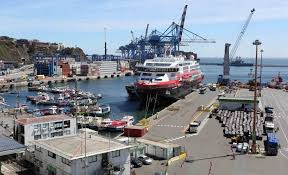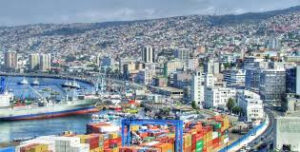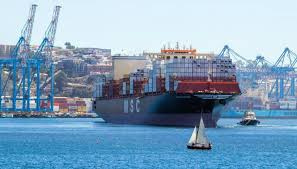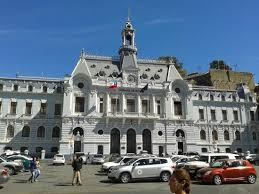How did Valparaíso become a key port in the Pacific?

How did Valparaíso become a key port in the Pacific?
How did Valparaíso become a key port in the Pacific? Valparaíso’s rise as a key port in the Pacific is a fascinating story of strategic location, economic opportunity, and historical events.
This coastal city, located in central Chile, has played a pivotal role in maritime trade and commerce. Here’s a closer look at how Valparaíso established itself as a major port.
Strategic Location
Valparaíso is situated on the central coast of Chile, providing a natural harbor that is well-protected from strong winds and rough seas.
This advantageous location made it an ideal stopover for ships traveling along the Pacific coast, facilitating trade routes between Europe, North America, and South America.

Spanish Colonial Influence
During the Spanish colonial period in the 16th century, Valparaíso became a vital port for the Spanish Empire.
The port served as a key link in the trans-Pacific trade, enabling the shipment of goods, resources, and silver from the Americas to Spain.
Nineteenth-Century Economic Boom
The discovery of nitrate deposits in northern Chile during the 19th century led to a significant economic boom.
Valparaíso emerged as the primary export port for this valuable resource, attracting merchants and investors from around the world.
Infrastructure Development
As trade increased, so did the need for improved infrastructure.
The construction of docks, warehouses, and railroads connected Valparaíso to the interior of Chile, enhancing its capacity to handle growing trade volumes.
International Trade Hub
By the late 19th century, Valparaíso had established itself as one of the most important ports in the Southern Hemisphere.
The city became a major hub for international shipping, with vessels from Europe, the United States, and Asia regularly stopping at its docks.
Immigration and Workforce
The booming port attracted a diverse population of immigrants, including Europeans seeking economic opportunities.
This influx of people contributed to the development of a skilled workforce, essential for supporting the growing maritime industry.
World Wars and Strategic Importance
During both World Wars, Valparaíso’s strategic location made it a critical supply point for military and commercial shipping.
The port’s facilities were utilized for troop transport and logistical support, further solidifying its importance on the global maritime map.
Cultural Exchange and Influence
Valparaíso’s role as a key port facilitated cultural exchange, making it a melting pot of ideas, languages, and traditions.
This cultural richness contributed to the city’s unique identity, enhancing its attractiveness to traders and travelers alike.
Modernization Efforts
In the 20th century, Valparaíso continued to modernize its port facilities to meet the demands of contemporary shipping.
Investments in technology and infrastructure improvements helped maintain its competitiveness as a major port in the Pacific.
Tourism and Heritage
In recent years, Valparaíso has embraced tourism, showcasing its maritime heritage and vibrant culture.
The port’s historical significance, along with its picturesque landscapes, has drawn visitors, reinforcing its status as a key destination in the Pacific.
In summary, Valparaíso’s emergence as a key port in the Pacific is the result of its strategic location, economic opportunities, and historical developments.
From colonial times to modern-day, the city has adapted and evolved, maintaining its significance in maritime trade and commerce.
Today, Valparaíso stands as a testament to the rich history and cultural diversity that have shaped its identity as a vital Pacific port.





Leave a Reply